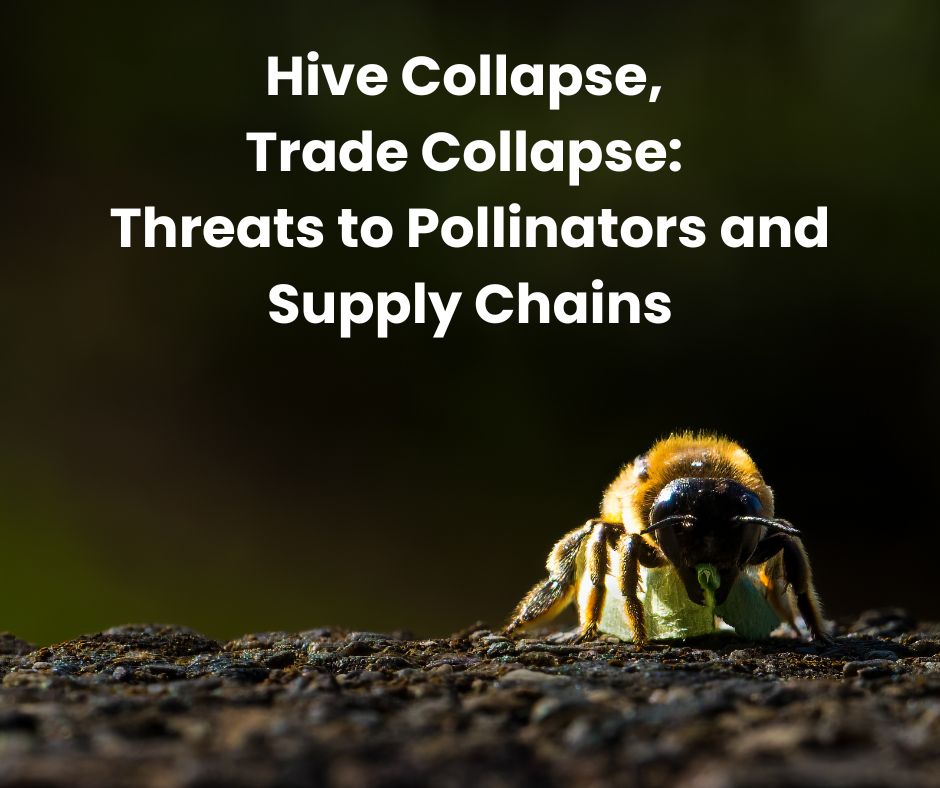Hive Collapse, Trade Collapse: Threats to Pollinators and Supply Chains

Pollinators are indispensable to both ecosystems and economies, yet they face a growing array of threats. Climate change, habitat loss, pesticides, and diseases—including Colony Collapse Disorder—are taking a toll on bee populations worldwide.
The implications extend far beyond the hive, reaching into the heart of global agriculture and trade.
Global Consequences
Declines in pollinator populations place an estimated US$235–577 billion of crop value at risk annually. High-value crops such as almonds, coffee, berries, and other key exports are particularly vulnerable. Without healthy pollinators, these crops may see dramatic yield reductions, threatening both local livelihoods and international markets.
Trade Vulnerabilities
Pollinator losses expose significant weaknesses in global trade systems:
· Lower export volumes – Reduced yields shrink the supply of crops available for international markets.
· Increased import dependency – Countries may be forced to rely on imports to meet domestic demand.
· Volatile food prices – Shortages can trigger price spikes and supply instability.
· Economic and geopolitical pressures – Food security concerns can create tension between trading nations.
Protecting pollinators is not just an ecological imperative—it is an economic strategy. Sustainable farming practices, habitat restoration, careful pesticide management, and coordinated biosecurity measures are critical steps. By investing in the health of pollinator populations, we safeguard biodiversity and the global food systems that billions of people rely on.